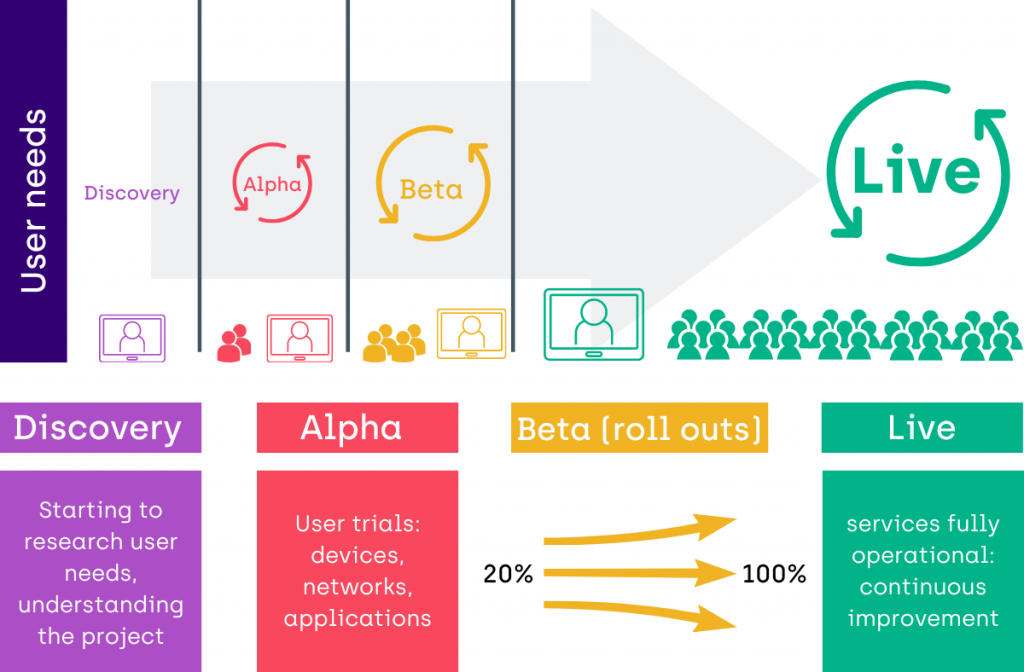App and website users across the globe are failed by a poor experience every day. Frustratingly, the solution is often incredibly easy. Our original intention for this article was to summarise the hotly anticipated UX trends that we are likely to see in 2023, but with very little effort, the answer is obvious: Digital product (in one form or another).
A recent report published on GlobeNewswire estimates that the global UX market size will increase from an estimated $465 million in 2021 to $1.3 billion in 2028 – a compounded growth rate of 16.4% over that period.
We believe this forecast is likely to become a reality. In the first few weeks of 2023 alone, there have been thousands (likely tens of thousands – we stopped searching after a while) of articles, interest pieces, and blogs written that extol the virtue of digital UX in areas such as artificial intelligence, extended reality, Web 3.0, the Metaverse, and Zero UI.
Even if these things (not a generic term – they are all part of the expertly named ‘Internet of Things’) seem abstract, take a moment to think about our hyperconnected world and its reliance on technology. It’s now the norm to use our phones and tablets to book events, make purchases, handle our banking and order a takeaway – you can even track the progress of a house purchase via an App, submitting scans of documents from your phone rather than making countless trips to the post office. The point is, consumers are demanding speed, efficiency, and a joined-up journey.
Loyalty to a brand is on a knife edge like never before.
Years of customer service means nothing if not translated to an App. Therein lies the opportunity – client retention, uplift at till or for a myriad of other reasons, UX needs to be a priority.
This, Bill Gates once said, is the driving purpose of technology,
“to fit in so that you don’t really even notice it, so it’s part of everyday life.”
With opportunity comes risks…
Our digital world, the one which is often hard to now distinguish, is littered with examples of poor UX – potentially costing millions in revenue through lost transactions, reputational damage or simply harpooning new client recruitment and retention schemes. We’ve all suffered – from the ecommerce site that only shares postage costs at checkout, to the need to renter personal details, account dashboards that aren’t real-time, pop-ups blocking data fields or simply not addressing the immediate issue the user demands.
And not the opportunity. The solution is to test, test, and test it again.
… Which can be mitigated by methodologically sound usability and concept testing
Over the decades, ExperienceLab have helped global brands through to government agencies understand the tackle their with digital UX challenges. From Meta, American Express, and Aviva, through to Spotify, Amazon Prime and the UK Government – over the decades we’ve been in business we’ve conducted hundreds of rounds of usability testing on wireframes to understand what users like and dislike – flushing out friction and pain points early.
Through our operationalised approach to usability and concept testing, we rapidly deliver user insights to enrich the brands understanding of specific user groups and to improve their products and services. The user feedback and design recommendations enable these companies to take meaningful actions through evidence-based research and to deliver an even better user experience to their end users and customers. Decisions based on truth; real insight driven from human interaction.
The secret to great UX is not feeling that a client, developer, or any individual can, or should, be able to pinpoint the exact set of UX issues. Quite the opposite. Real usability testing and research does all the heavy lifting, shining a light on the real issues that are causing friction. This organic truth driven level of insight will eventually bear fruit against any business or marketing objectives but listening and implementing recommended improvements.
Failing forward: The ExperienceLab approach
The main framework we use to conduct usability and concept testing, not just for digital products, but service design work too, is the Government Digital Services (GDS) model (see figure 1), a framework that puts the users’ needs at the heart of the solution.
Following an extensive discovery phase to identify users’ needs, we then conduct usability pilots on a small scale with a handful of users, followed by repeat rounds of testing, iterating, designing, and re-testing. This approach is fundamental to how we work with our clients because it means we can refine the product or service to a point that can be tested on a larger scale (beta testing). Finally, following extensive research and usability testing, we roll out the new product or service on a large scale and then test it in a business-as-usual environment.
Christian Bason’s idea of ‘failing forward’ on a small scale, that allows for small errors to be made, learned from, and a new product or service to be designed, neatly sums up how we work: Fail early to succeed sooner.

The future is bright for digital UX
One thing is for certain – digital UX is in very good health and it will be fascinating to see how 2023 unfolds. Given the rate of technological evolution, it might be that by the time 2024 rolls around, we are talking about something that hasn’t even been conceived yet.
When that time comes, we must not forget the value of user research in times of exciting technological innovation.
Watch this space…
For more information on how ExperienceLab work, please get in touch.


